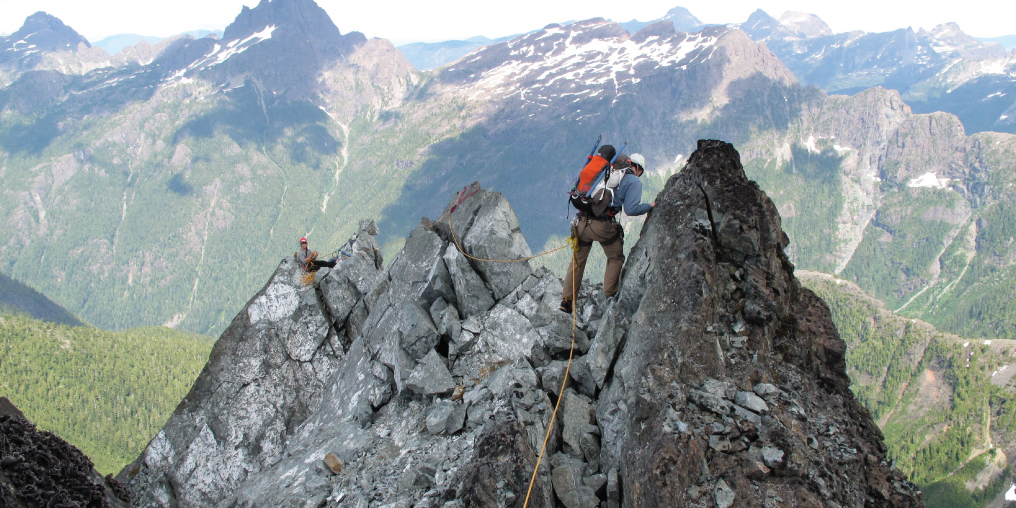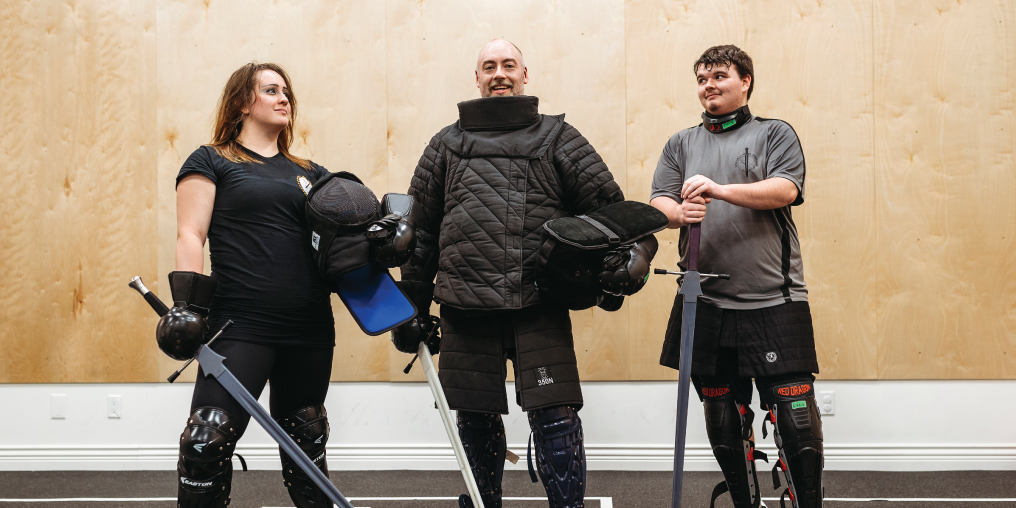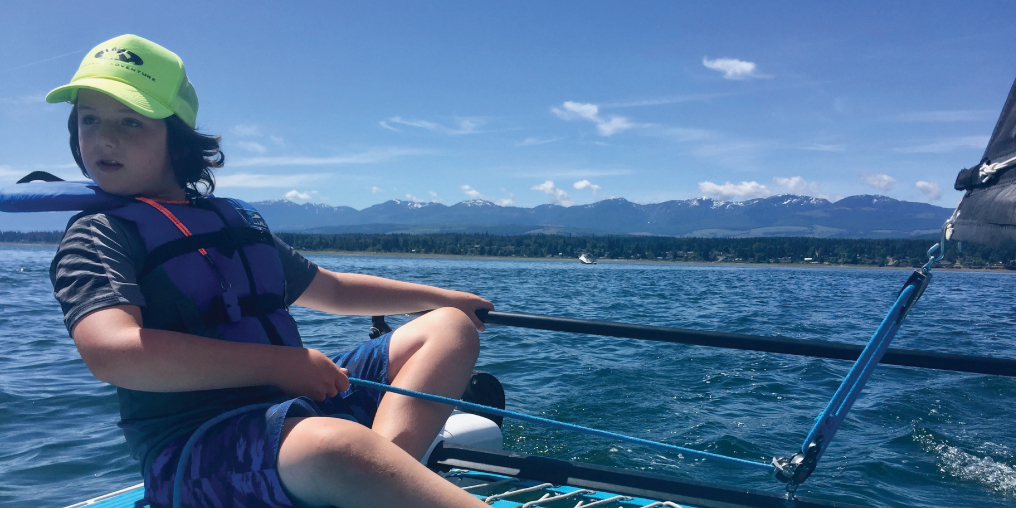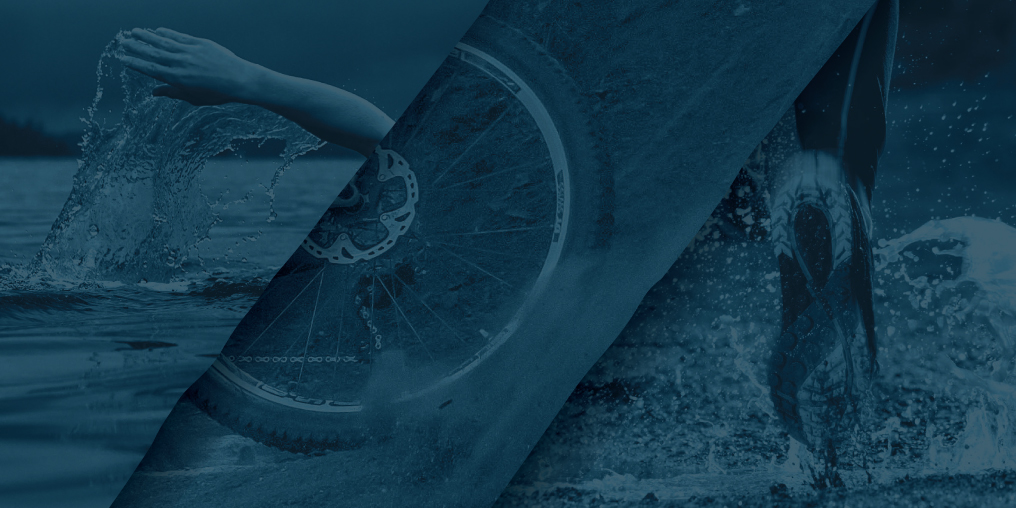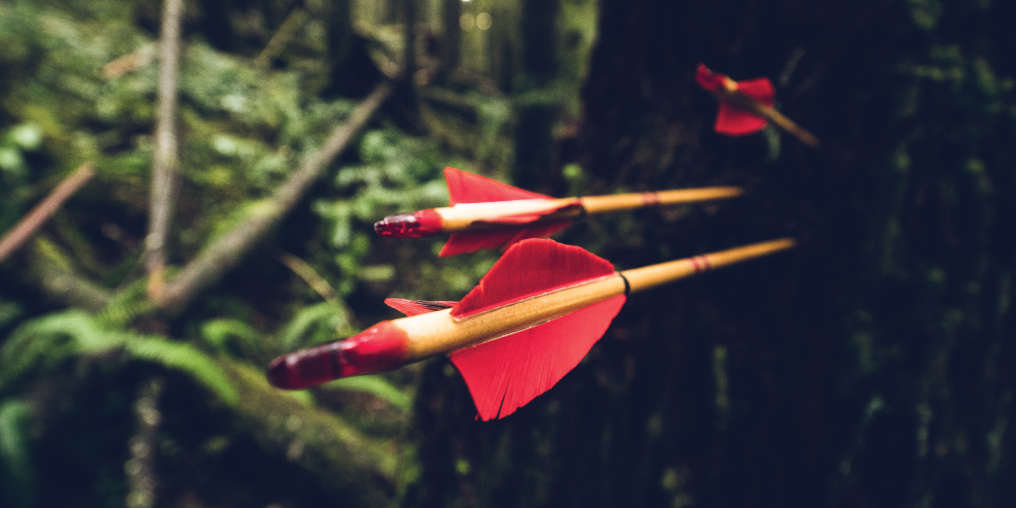I don’t remember the summit of Mount Colonel Foster.
I know I stood on it with my friends, Chris and Sean. I know we signed our names in the summit registry. But all that I remember is panic. By the time we topped out, it was nearly eight o’clock at night, we were only halfway through the summit traverse, we had no water and little food, and our route off this mountain was anything but clear.
As the reality of our predicament settled in, I remember my chest tightening, my pulse quickening, and nausea tickling my stomach. What the hell was I doing here?
Risk is defined as “a situation involving exposure to danger, harm or loss.” It’s always relative. I hate losing money, so I don’t gamble, but I know I’m more comfortable than most when it comes to jumping off a cliff, being exposed to heights, and going fast on skis or wheels. The mental stillness that comes with the thought: “Make the next move, or else,” is one of my favourite feelings. I’ve shaped my life around chasing it: I became a writer so I could get paid to ski, bike, and climb and call it work.
Most of that day on Colonel Foster was enjoyable: interesting climbing and good company in an epic position. The highlight was a traverse along a vertical face with nearly 1,000 metres of air beneath my feet. But as I cleared out a place to spend the night among the rocks, I started to question the sustainability of my thrill-seeking genes.
The psychologist Marvin Zuckerman was the first to identify risk seeking as a hereditary personality trait in the 1960s. He called it “sensation seeking” and found it distributes across a bell curve within society: some people have little desire for novelty and risk, some can’t get enough, and most fall in the middle.
“Homo sapiens were the only group of early hominids to emigrate over the entire world, which entailed great risk, so I think humans as a species are characterized by novelty- and intensity-seeking,” he said in a 2009 interview.
Early humans who hunted big animals or explored a new valley were often rewarded for their efforts. But it was a fine balance. “If you’re taking too much risk you may die before you have a chance to spread your genes around, and if you’re too cautious, you may not have the advantage of obtaining resources that entail some risk,” Zuckerman said.
He would say sensation seeking is a DNA remnant: I’m not chasing mastodons, so I chase adrenaline instead. That makes it seem selfish, but newer research suggests there is still societal value.
In his book Buzz! Inside the Minds of Thrill-Seekers, Daredevils, and Adrenaline Junkies, Kenneth Carter reports that the bodies and minds of high sensation-seeking personalities react differently to risky situations than the rest of society. Instead of producing the stress hormone cortisol, their bodies respond by releasing dopamine, a hormone associated with pleasure.
“High sensation seekers experience more pleasure, but less stress, in exactly the same situations,” says Carter. “We want them in the cockpit of an airplane during an emergency. We want [them] as nurses or emergency room doctors.”
When a stressful experience passes and we don’t die, our brain and body develop a tolerance. It takes a riskier situation to give the same rush of dopamine next time. When I first started climbing, any route gave me an adrenaline rush. Now, to get the same feeling, I have to try harder. Or climb higher.
That’s how I ended up on Colonel Foster.
I’d never spent an unexpected night out on a mountain before, and the overwhelming uncertainty of what lay ahead surpassed my risk tolerance. Cortisol pulsed through my veins. I barely slept. It took all the next day to get off the mountain, and we stumbled down the Elk River trail in the dark. The only dopamine rush came when we finally reached the car.
But years later, just thinking about that climb brings on the rush of excitement. Call me crazy—or maybe naturally adapted. I can’t wait to do it again.

